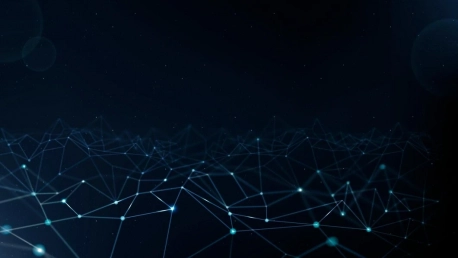The Federal Communications Commission has recently decided to reinstate rules associated with net neutrality, taking a critical step towards maintaining an open and equal internet. This decision arrives in the middle of an increasingly advanced technological landscape, marked by the emergence of 5G and the concept of network slicing. This move by the FCC underscores the delicate interplay between innovation and regulation, with the ultimate goal of guaranteeing fair internet access for all.
Understanding Net Neutrality and Its Impact
The Principles of Net Neutrality
Net neutrality stands as the foundational principle that keeps the internet as a level playing field. It requires Internet Service Providers (ISPs) to treat all data on the internet uniformly without discrimination. This means that ISPs cannot intentionally speed up, slow down, or block any content or services to benefit certain products or websites over others. The crux of net neutrality rests on the belief that the internet should be a resource that fosters freedom of information, encourages competition and innovation, and provides equal opportunities for all.
The FCC’s Recent Vote on Net Neutrality
The FCC’s decision to reinstitute net neutrality, with a 3-2 majority, signals a significant policy turnaround from previous years when such protections were rolled back. By restoring these rules, the FCC aims to curb any unfair practices by ISPs that might compromise the open nature of the internet. The move promises to defend basic principles that have enabled the internet to thrive as an engine of economic growth, social discourse, and innovation. This decision also aligns with public sentiment, as many consumer advocates and internet users have voiced strong support for the preservation of net neutrality.
Addressing Technological Advancements and Their Implications
The Emergence of 5G and Network Slicing
The advent of 5G technology promises to revolutionize the way we interact with the internet, bringing faster speeds and more reliable connections. Alongside it, network slicing has the potential to offer tailor-made virtual networks for specific needs, like autonomous driving and telemedicine. These technologies are set to redefine the boundaries of internet service capabilities. However, they also bring to light the challenges net neutrality faces in adapting to new technological paradigms. The fundamental question arises as to how these innovations can coexist with the tenets of an open and neutral internet.
Balancing Innovation With Regulation
The push to bring back net neutrality marks an FCC that values protecting consumer rights while still appreciating the need for innovation. While new technologies like network slicing represent a leap forward, they must not violate the essence of net neutrality, which insists on nondiscriminatory treatment of data. The FCC’s approach aims to guard against the creation of a two-tiered internet while striving to understand and harness the potential benefits that these new technologies could bring. It’s a tightrope walk of promoting progress while simultaneously safeguarding the foundational elements that keep the internet equitable.
Navigating the Legal and Ethical Considerations
Classifying ISPs Under Title II
By classifying ISPs as utilities under Title II, the FCC has leveraged a stronger legal basis to implement net neutrality rules. This designation is pivotal, as it underpins the FCC’s capacity to enforce fair practices among internet providers. Through this classification, the FCC can better address consumer concerns regarding privacy, access, and equitable treatment. It also underscores a commitment to treating the internet as an essential service—a utility akin to water and electricity—that must be ubiquitously available.
Anticipating Legal Challenges
Nevertheless, the reinstatement of net neutrality is not without its potential hurdles. Already, there are predictions of legal challenges on the horizon, questioning the extent of the FCC’s authority. One such argument is rooted in the “major questions doctrine,” which posits that agencies like the FCC may require explicit congressional authorization when regulating on significant economic and political issues. The coming months may provide a legal litmus test for the FCC’s latest net neutrality measures, which, despite being enacted with consumer interests in mind, will face scrutiny under the judicial microscope.
The Role of Big Tech in the Net Neutrality Debate
Big Tech Companies as Gatekeepers
The conversation around net neutrality often focuses on ISPs, but the increasing influence of Big Tech companies presents a new variable. These firms—masters of their domains—hold considerable sway over which apps, services, and content are readily available to consumers. While ISPs are bound by net neutrality rules, Big Tech companies possess a level of content control that can significantly shape the digital environment. Their role as gatekeepers brings an added complexity to the maintenance of a balanced and impartial internet.
Industry Perspectives Versus Consumer Advocacy
Telecom industries view network slicing and 5G as immense business opportunities, envisioning a future infused with premium services that can offer enhanced experiences for those willing to pay for them. This perspective, however, clashes with that of consumer advocates, who fear that a focus on premium services may degrade standard internet offerings, widening the digital divide. This tension underscores the FCC’s challenge to mediate between the interests of the industry and the rights of consumers, ensuring that the core promise of the internet—to deliver universal access and opportunity—remains unbroken.
The Future of Internet Regulation and Consumer Access
Protecting the Consumer Internet
Above all, the FCC’s dedication to protecting the consumer internet is evident. As new technologies like network slicing emerge, the commission is vigilant in its commitment to enforcing net neutrality principles. The intent is clear—to prevent any practices that may harm the open nature of the internet or disadvantage users. For the FCC, it means continually adapting regulatory frameworks to ensure they fit within the evolving digital landscape while preserving the right to unfettered internet access for all.
Striving for Balance Amidst Technological Change
Navigating the intricacies of technological advances while ensuring equitable internet access presents a complex regulatory journey for the FCC. The commission understands that its actions will shape not only the current digital environment but will set precedents for how future technologies are integrated and managed. This means establishing a dynamic regulatory framework that can support innovation and growth while holding true to the mission of maintaining a competitive, fair, and consumer-driven internet. It is a formidable task that the FCC accepts, recognizing that its decisions will reverberate through the digital domain, influencing the trajectory of internet freedom and accessibility.








